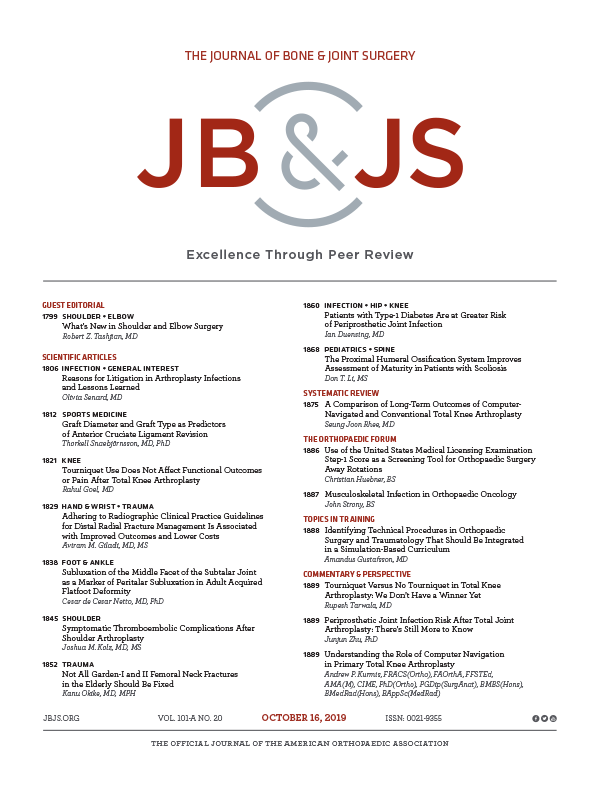
Observation versus Debridement of Unstable Chondral Lesions During Partial Meniscectomy

Observation versus Debridement of Unstable Chondral Lesions During Partial Meniscectomy
Observation Versus Debridement of Unstable Chondral Lesions During Partial Meniscectomy: Analysis of Patient Outcomes and Degenerative Joint Disease at 5 Years in the Chondral Lesions And Meniscus Procedures (ChAMP) Randomized Controlled Trial.
J Bone Joint Surg Am . 2021 Sep 1;103(17):1569-1577.Did you know you're eligible to earn 0.5 CME credits for reading this report? Click Here
Synopsis
One hundred and ninety patients undergoing arthroscopic partial meniscectomy with concurrent unstable chondral lesions were randomized to receive debridement (n=98) or observation (n=92). The primary outcome of interest was knee pain as measured by the Western Ontario and McMaster Universities Osteoarthritis Index (WOMAC) pain scores. Secondary outcomes of interest were functional outcomes as meas...
To view the full content, login to your account,
or start your 30-day FREE Trial today.
FREE TRIAL
LOGIN
Forgot Password?
Explore some of our unlocked ACE Reports below!

Learn about our AI Driven
High Impact Search Feature
Our AI driven High Impact metric calculates the impact an article will have by considering both the publishing journal and the content of the article itself. Built using the latest advances in natural language processing, OE High Impact predicts an article’s future number of citations better than impact factor alone.
Continue



 LOGIN
LOGIN

Join the Conversation
Please Login or Join to leave comments.